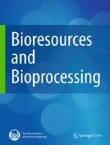On the occasion of celebrating the 9th anniversary Bioresources and Bioprocessing we took the opportunity to interview Tingyue Gu, the new Editor-in-Chief and the former Associate Editor of BIOB, for our blog.
Jingjing Lin Jan 2023
Tell us a little about yourself. What made you consider taking on the role as EiC for Bioresources and Bioprocessing (BIOB)?
Prof. Tingyue Gu
I am currently a professor in the Department of Chemical & Biomolecular Engineering at Ohio University. I got my PhD degree in chemical engineering from Purdue University in USA under Prof. George T. Tsao in 1990.
I have done research in various areas including bioseparations (mostly liquid chromatography separation of proteins), downstream protein purification for drug testing, bacterial and fungal fermentation, bioelectrochemical systems, biocorrosion, control of problematic biofilms in industrial settings (especially oil and gas) and medical settings (e.g., biomedical implants), and utilization of biofilms for bioremediation. I have one year of corporate research experience with Miller Brewing Company prior to my academic career.
I joined the BIOB editorial board upon invitation from my friend, Prof. J.H. Xu, who is the editor-in-chief. It was also because of my desire of service to the research community. Editors and reviewers spend their valuable time on our own publications. Thus, we are obligated to serve others in return. It is only fair that way.
How has the journal’s field advanced in the last few years?
This journal has a major focus on utilization of bioresources for bioenergy and bioproducts. This field has seen tremendous advances in the past decade. Metabolic engineering and synthetic biology are playing significant roles.
Oil prices are stabilizing now. Biomass/bioenergy research are bouncing back. Environmental remediation research will see continued growth because countries like China are investing more in environmental research. Urban mining from electronic wastes such as circuit boards and spent batteries will gain momentum in the coming years because they are becoming a major problem in our modern society.
What do you think will be an important focus of research in the next several years?
I think metabolic engineering and synthetic biology will become more important in the coming years. I have seen lots of advances in metabolic engineering in bioenergy research and production of value-added products. Urban mining research using various techniques including bioleaching will become popular. Post-leaching process using various techniques including electrochemical methods will be a growth area too.
In our work on electron transfer in biofilms, we have teamed up with molecular biologists to manipulate the relevant genes in bacteria in order to explain electrogenicity and biocorrosion mechanisms with implications in evolutionary microbiology. Metagenomics and microbiomes are popular buzz words in environmental research with transcriptomics appearing more often nowadays. We will see more papers using these tools.
In your perspective, what do you see as opportunities for the journal’s field to grow, specifically in your region?
Biochemical engineering will continue to grow. Almost all chemical engineering departments at USA universities have been renamed with an emphasis on bioengineering or biomolecular engineering. With the microbiome initiative in the USA which started in May 2016, we will see more research on industrial microbiology and medical microbiology utilizing metagenomics and microbiomes.
Metabolic engineering and synthetic biology will play even bigger roles in biomass/bioenergy research. Bioengineering research in Asia, especially in China and India, will see more growth because of increased government investments.
What advice would you give a researcher before submitting to the journal?
Read some good published articles as examples. Follow journal guidelines. Pay attention to technical writing details. Do not abuse significant figures because that will make you look amateurish. Add error bars and use p values for statistical significance especially when data are close.
Be consistent in your writing. Tell a complete story. Telling a good story is better than telling several stories without good organization. Do not miss important information that helps others to learn or to reproduce your experiment. Self-plagiarism is a taboo. This means you should not use previously published unique sentences to describe experimental procedures, etc. You must rephrase using new sentence structures and words or you can skip the details by citing a published paper when you describe a known experimental procedure.
